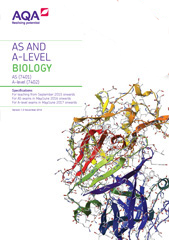3.2.1.2 Structure of prokaryotic cells and of viruses
Content |
Opportunities for skills development |
|---|---|
Prokaryotic cells are much smaller than eukaryotic cells. They also differ from eukaryotic cells in having:
In addition, many prokaryotic cells have:
Details of these structural differences are not required. Viruses are acellular and non-living. The structure of virus particles to include genetic material, capsid and attachment protein. |
